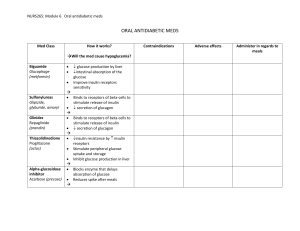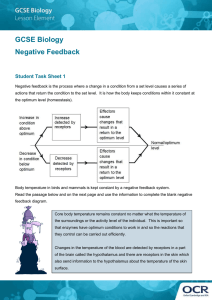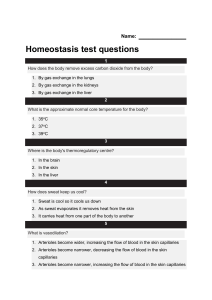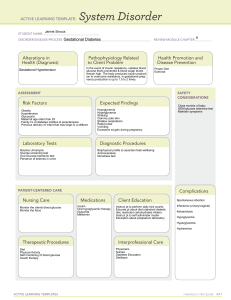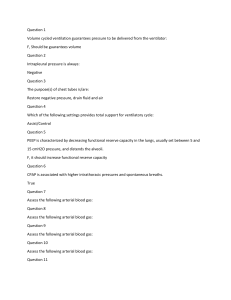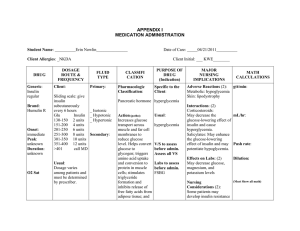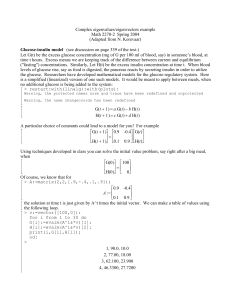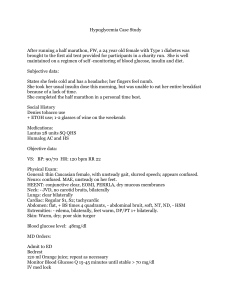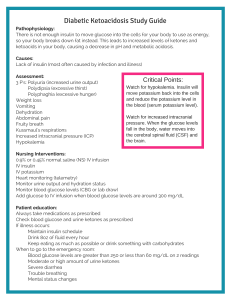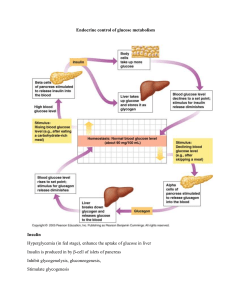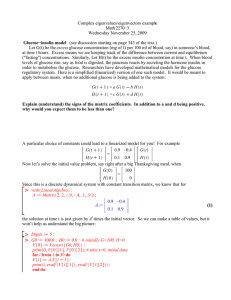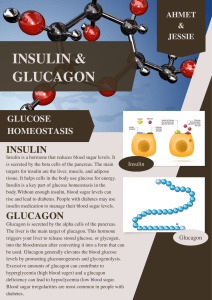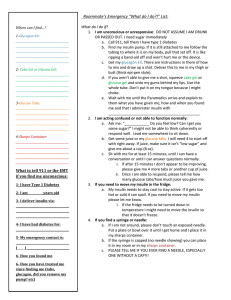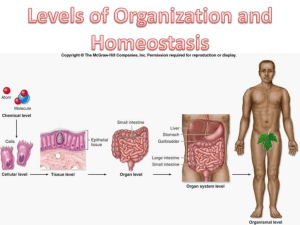Solution_02
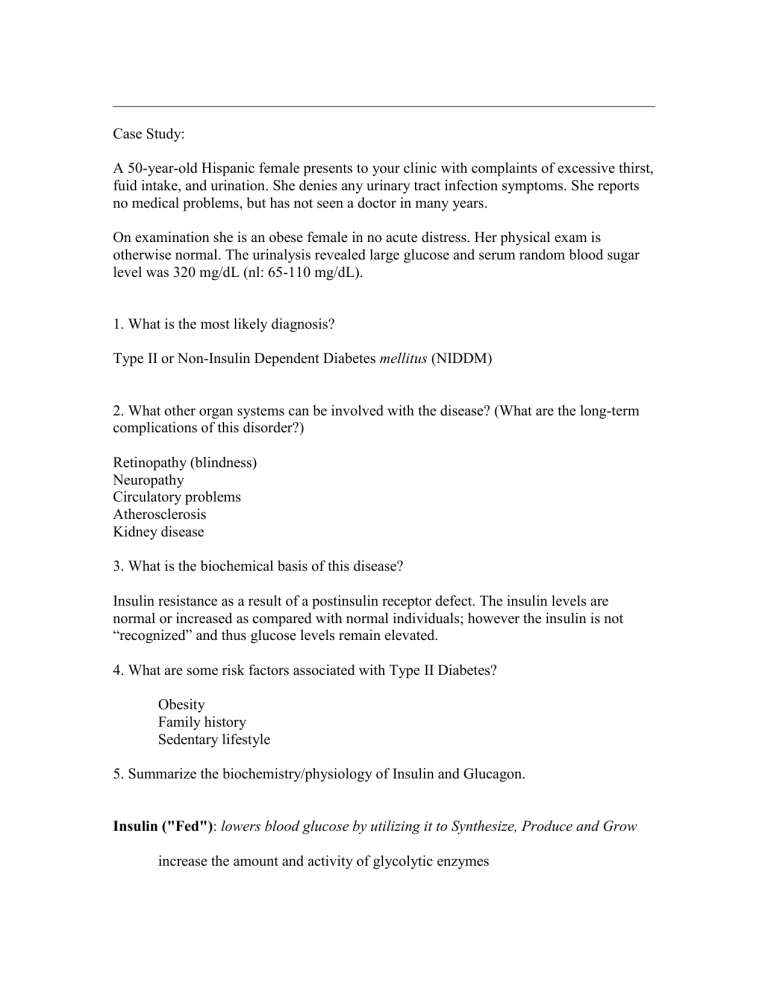
________________________________________________________________________
Case Study:
A 50-year-old Hispanic female presents to your clinic with complaints of excessive thirst, fuid intake, and urination. She denies any urinary tract infection symptoms. She reports no medical problems, but has not seen a doctor in many years.
On examination she is an obese female in no acute distress. Her physical exam is otherwise normal. The urinalysis revealed large glucose and serum random blood sugar level was 320 mg/dL (nl: 65-110 mg/dL).
1. What is the most likely diagnosis?
Type II or Non-Insulin Dependent Diabetes mellitus (NIDDM)
2. What other organ systems can be involved with the disease? (What are the long-term complications of this disorder?)
Retinopathy (blindness)
Neuropathy
Circulatory problems
Atherosclerosis
Kidney disease
3. What is the biochemical basis of this disease?
Insulin resistance as a result of a postinsulin receptor defect. The insulin levels are normal or increased as compared with normal individuals; however the insulin is not
“recognized” and thus glucose levels remain elevated.
4. What are some risk factors associated with Type II Diabetes?
Obesity
Family history
Sedentary lifestyle
5. Summarize the biochemistry/physiology of Insulin and Glucagon.
Insulin ("Fed") : lowers blood glucose by utilizing it to Synthesize, Produce and Grow increase the amount and activity of glycolytic enzymes
glycogenesis increase protein synthesis decrease protein degradation increase the conversion of CHO's to fatty acids
Glucagon ("Fasted") : raises blood glucose by inducing glucose synthesis through
Gluconeogenesis and Glycogenolysis increase the amount and activity of gluconeogenic enzymes glycogenolysis
_______________________________________________________________________

